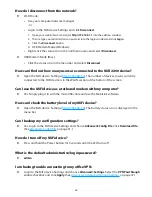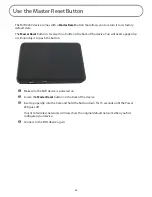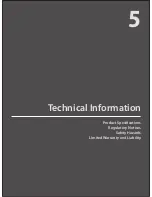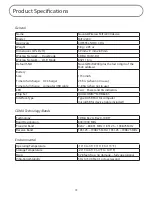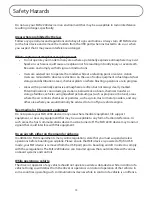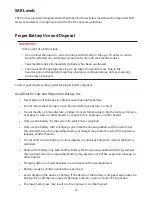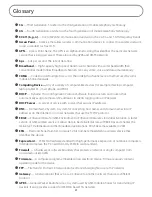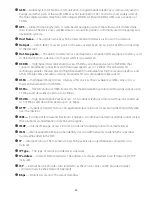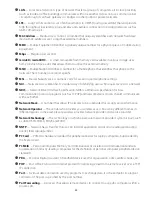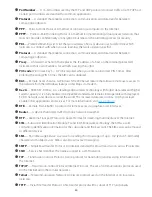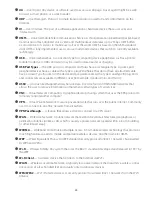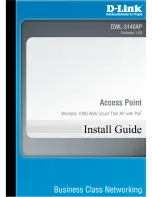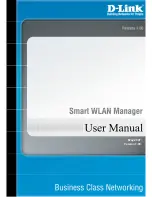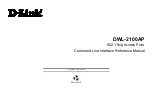
83
●
LAN
— Local Area Network. A type of network that lets a group of computers, all in close proximity
(such as inside an office building), communicate with one another. It does not use common carrier
circuits though it can have gateways or bridges to other public or private networks.
●
LTE
— Long Term Evolution. A set of enhancements to UMTS (moving toward 4G) that will provide
high throughput, low latency, plug and play and seamless connection to existing networks such as
GSM, cdmaOne, etc.
●
MAC Address
— Media Access Control. A number that uniquely identifies each network hardware
device. MAC addresses are 12-digit hexadecimal numbers.
●
MEID
— Mobile Equipment IDentifier. A globally unique number for a physical piece of mobile station
equipment.
●
Mbps
— Megabits per second.
●
microSD / microSDHC
— A small, removable flash memory card available in various storage sizes.
Some products have a slot that allows them to utilize this external memory.
●
MSID
— Mobile Station IDentifier. A number for a mobile phone that identifies that phone to the
network. These numbers are carrier specific.
●
MSL
— Master Subsidy Lock. A numeric code for accessing certain phone settings.
●
NAI
— Network Access Identifier. A standard way of identifying users who request access to a network.
●
NDIS
— Network Driver Interface Specification. NDIS is a Windows specification for how
communication protocol programs (such as TCP/IP) and network device drivers should communicate
with each other.
●
Network Mask
— A number that allows IP networks to be subdivided for security and performance.
●
Network Operator
— The vendor who provides your wireless access. Known by different names in
different regions, some examples are: wireless provider, network provider, and service provider.
●
Network Technology
— The technology on which a particular network provider’s system is built; such
as GSM, HSPA, CDMA, EDGE, and EVDO.
●
NNTP
— Network News Transfer Protocol. An Internet application protocol for reading and posting
Usenet (newsgroup) articles.
●
PC Card
— PCMCIA’s hardware standard for peripheral devices for laptop computers. Superseded by
the ExpressCard.
●
PCMCIA
— Personal Computer Memory Card International Association. An international standards
organization of industry-leading companies for the definition of personal computer peripheral device
standards.
●
PDA
— Personal Digital Assistant. A handheld device used for organization, notes, address books, etc.
●
POP
— Post Office Protocol. An Internet protocol for retrieving email from a remote server over a TCP/
IP connection.
●
Port
— A virtual data connection used by programs to exchange data. It is the endpoint in a logical
connection. The port is specified by the port number.
●
Port Forwarding
— A process that allows remote devices to connect to a specific computer within a
private LAN.
Summary of Contents for MiFi2200
Page 1: ...2200 Intelligent Mobile Hotspot user product guide ...
Page 13: ...2 Using Your MiFi 2200 Using the MiFi 2200 for the First Time Connecting in Wi Fi Mode ...
Page 37: ...36 Wi Fi Log Click the Wi Fi Log button to view a listing of Wi Fi events most recent first ...
Page 79: ...6 Glossary Glossary ...


